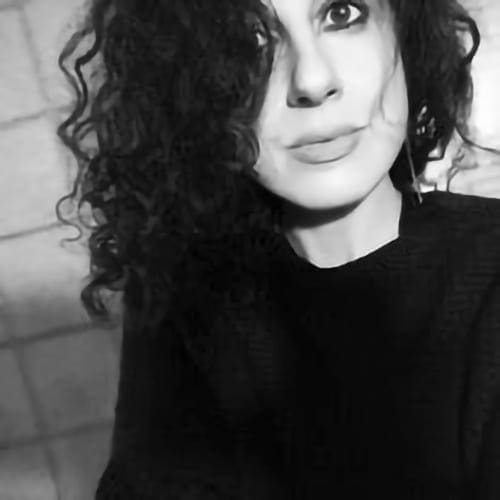It is called PEL Art Project.
It is a collective of three artists, two Cypriots and one Armenian, united by a common purpose: to bring art into complex settings such as nursing homes and temporary detention centres for migrants. Their names are Pantelis, Liana, and Elena. I met them in Cyprus, the island divided by Europe’s last wall and the first stage of a project that will take them to Italy, Greece, and Armenia.
The late August Cypriot light is still sharp and vibrant, even though sunset is approaching. Today everything seems to flow more slowly, even words—perhaps fatigue, perhaps difficulty gathering and recounting the emotions of the day that has just ended. I am sitting around a table with the three guys from the PEL Art Project collective to comment on the last four days of an extraordinary project that began within the walls of a detention centre in Menoya and ended in the garden of a retirement home in Agios Antonios, here in Cyprus. It is Liana Ghuk Asyan who speaks first. With ample black eyes and a thin body but firm gestures, Liana is an artist of Armenian origin who has been working for many years in Italy, in Milan. Next to her is Pantelis Nicolau, a graduate of the Brera Academy in Milan, who teaches art in Nicosia, the capital. Then there is Elena Adamou, also an artist from Nicosia. PEL Art Project (PEL is the acronym of the three artists) is a collective created with the idea of working in particular social contexts, such as nursing homes or detention facilities, by organizing short painting workshops whose primary purpose is to involve the guests of the facilities, as in the case of the migrants detained in the Menoyia centre, in the creation of artistic works.
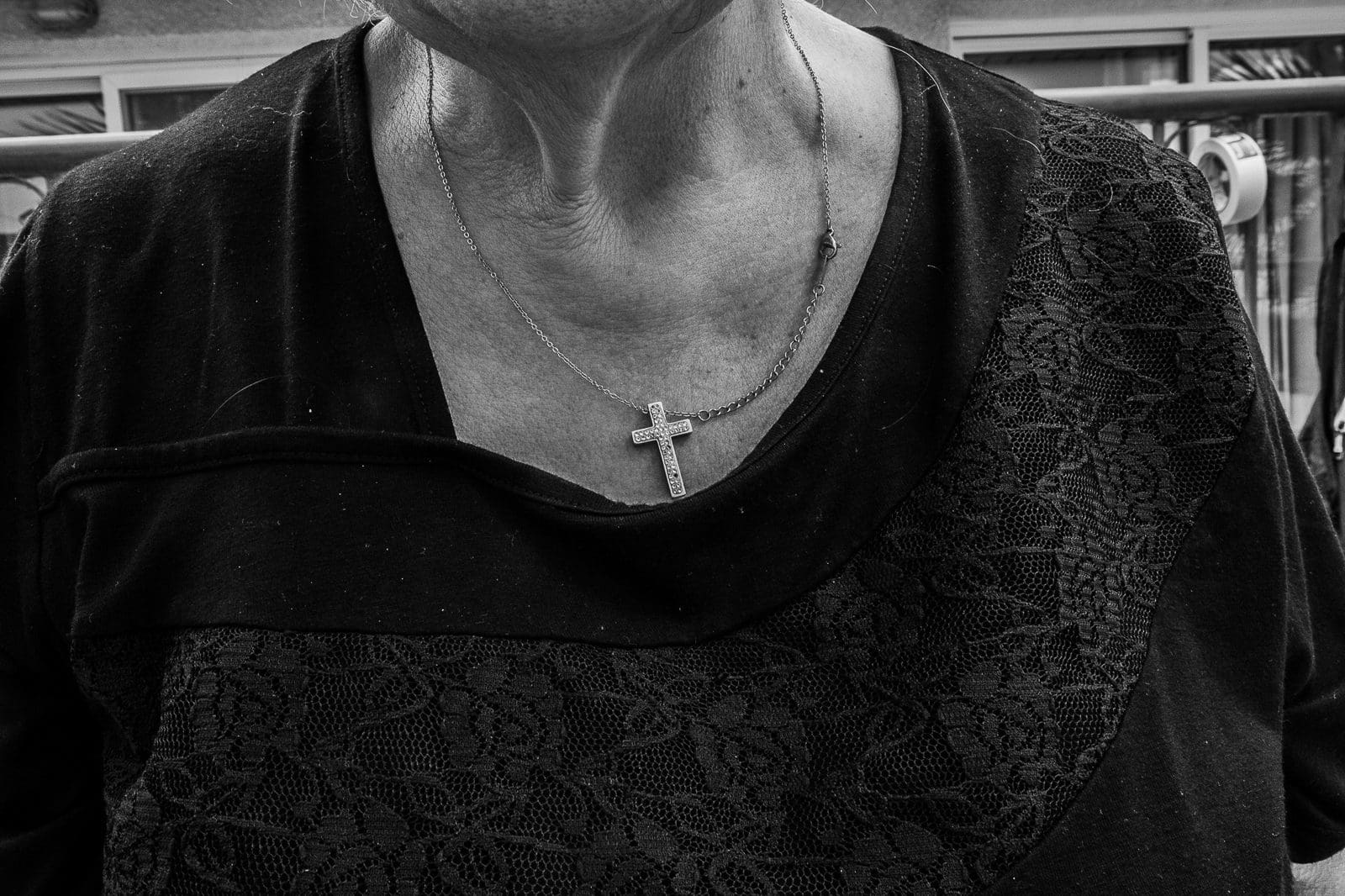
Cyprus: Europe’s last border
The PEL Art Project aims to offer a new, different experience, leave a beautiful memory and a smile, and transmit a bit of well-being to those living in a painful, stressful, or particularly fragile context.
“Pantelis, Elena, and I studied together at the Brera Academy of Fine Arts, and I had been thinking about organizing something beautiful with them for a long time,” Liana says.“I have always been very fascinated by the history of Cyprus, and I wanted to start from here; I wanted to get to know this territory divided in two because, like Armenia, my home country, it is exceptionally geographically etched, divided, occupied. This island is like a woman with a torn dress piece. So I proposed the project to Pantelis and Elena, and they were enthusiastic and accepted, which is how PEL Art Project was born. This one in Menoya is the first step on a path we care about. We want to bring colours where there are none ”.
The Immigration Detention Centre in Menoyia is located in the district of Larnaca. Formerly known as Cizio or Kition Larnaca, positioned on the island’s southeastern coast, it is the third largest city in Cyprus by population after Nicosia and Limassol. In Cyprus, every year, hundreds of irregular migrants are detained in conditions comparable to prison, even for long periods, while awaiting deportation.
Europe’s last border marks this island, the buffer zone: the buffer zone between the northern part of Nicosia, which is part of the Republic of Cyprus, and the southern part occupied by the Turks, the Turkish Republic of Northern Cyprus, recognized only by Ankara, the flow of migrants began more than a decade ago and continues. Cyprus is currently the European Union country with the highest percentage of asylum seekers in its population. By now, there are 30,000 of them in reception camps: Somalis, Afghans, Syrians, Pakistanis, Nigerians. A stream of desperate people who remain entangled in waiting for the verdict of an asylum claim that no one knows how it will turn out. If the request is not granted, their fate is repatriation. In 2022, 3,200 asylum applications were denied.
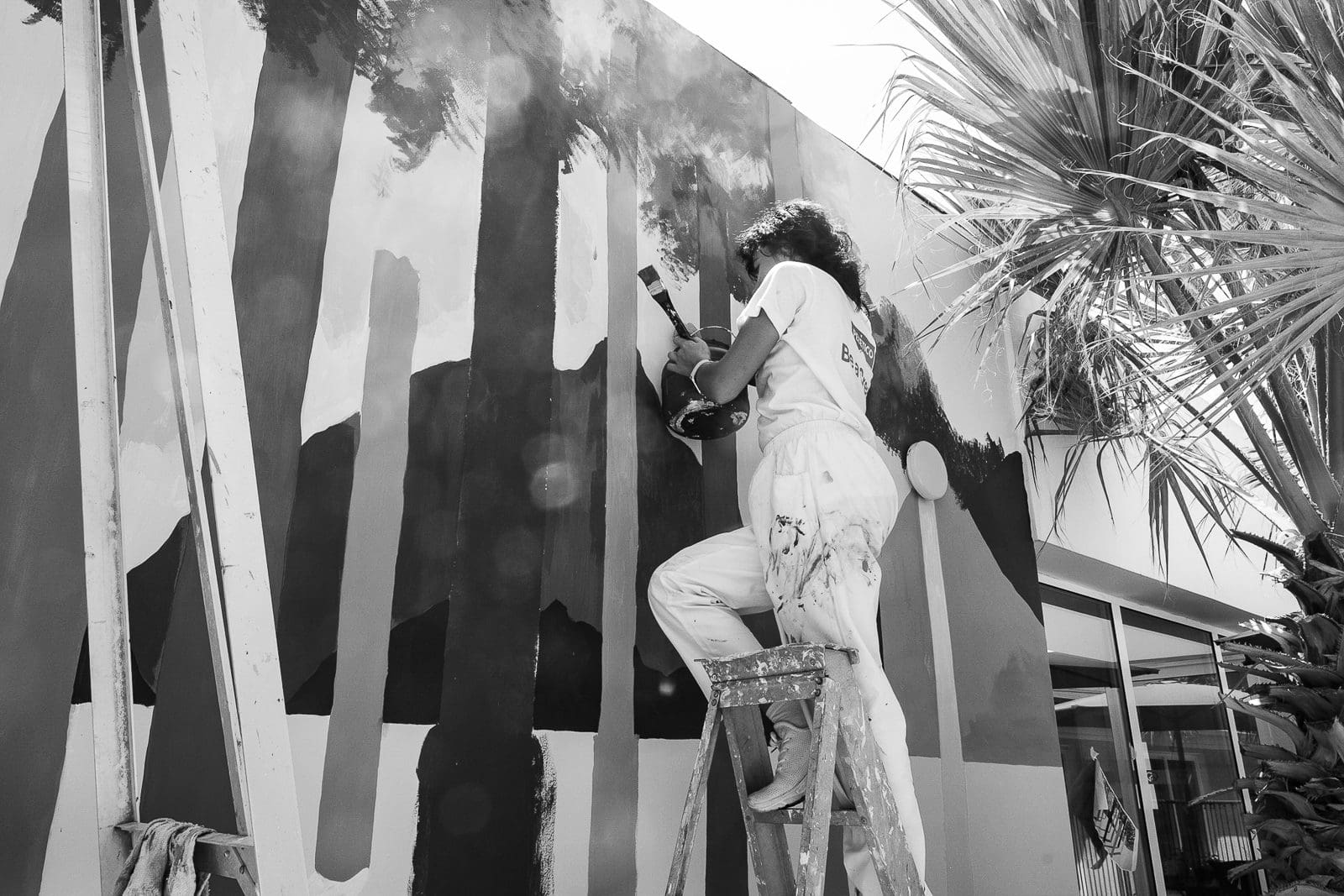
“These are particular places“, Pantelis interjects, “not common. We didn’t know how the detainees would take our presence, and they, meeting us today in the cafeteria, didn’t even know what it was about, but when they saw the colours, the brushes, and our three smiles, everything started to flow. And the mural we prepared inside the canteen, little by little, took shape and colour with everyone’s help. These people need love, smiles, and patience to cooperate ”.
A map of the island is spread out on the table where we are sitting. Some points are marked. We planned to visit these places together; Liana, however, with her Armenian passport, cannot cross the border that bisects the city. Borders. Philosopher Pier Aldo Rovatti points out how the word Ethics comes from the ethos, and Heidegger translates this Greek word not so much with “man’s character” but with “sojourn,” “place in which one dwells,” “open region in which man resides“: ethics. Iain Chambers, in Migratory Landscapes, writes: ” The dispersion that migration brings with it disrupts and challenges the broader themes of modernity: the nation and its literature, its language and its sense of identity; the metropolis; the importance of centrality; the importance of psychic and cultural homogeneity. In recognition of the other, of radical otherness, we recognize that we are no longer at the centre of the world ”.
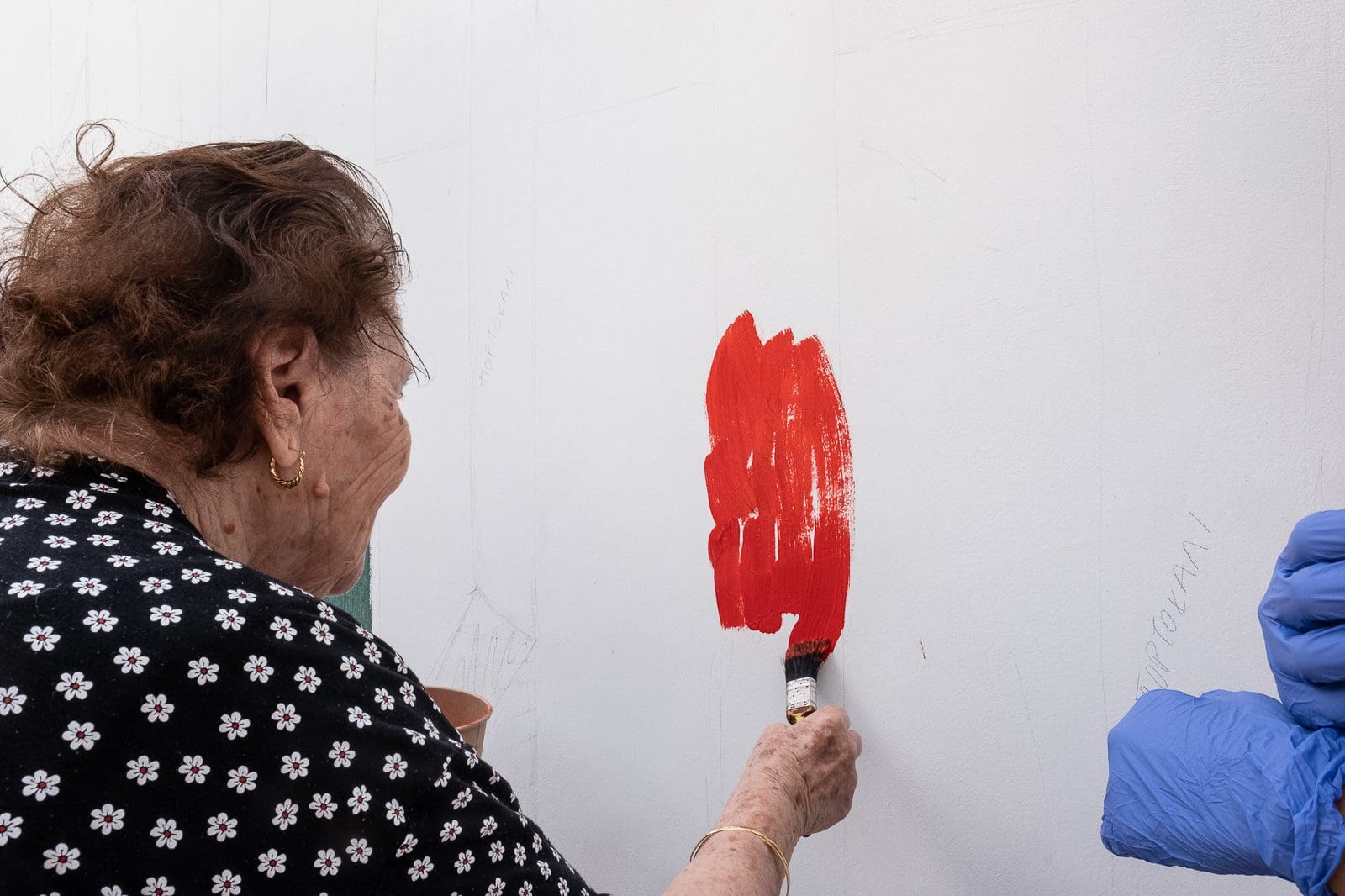

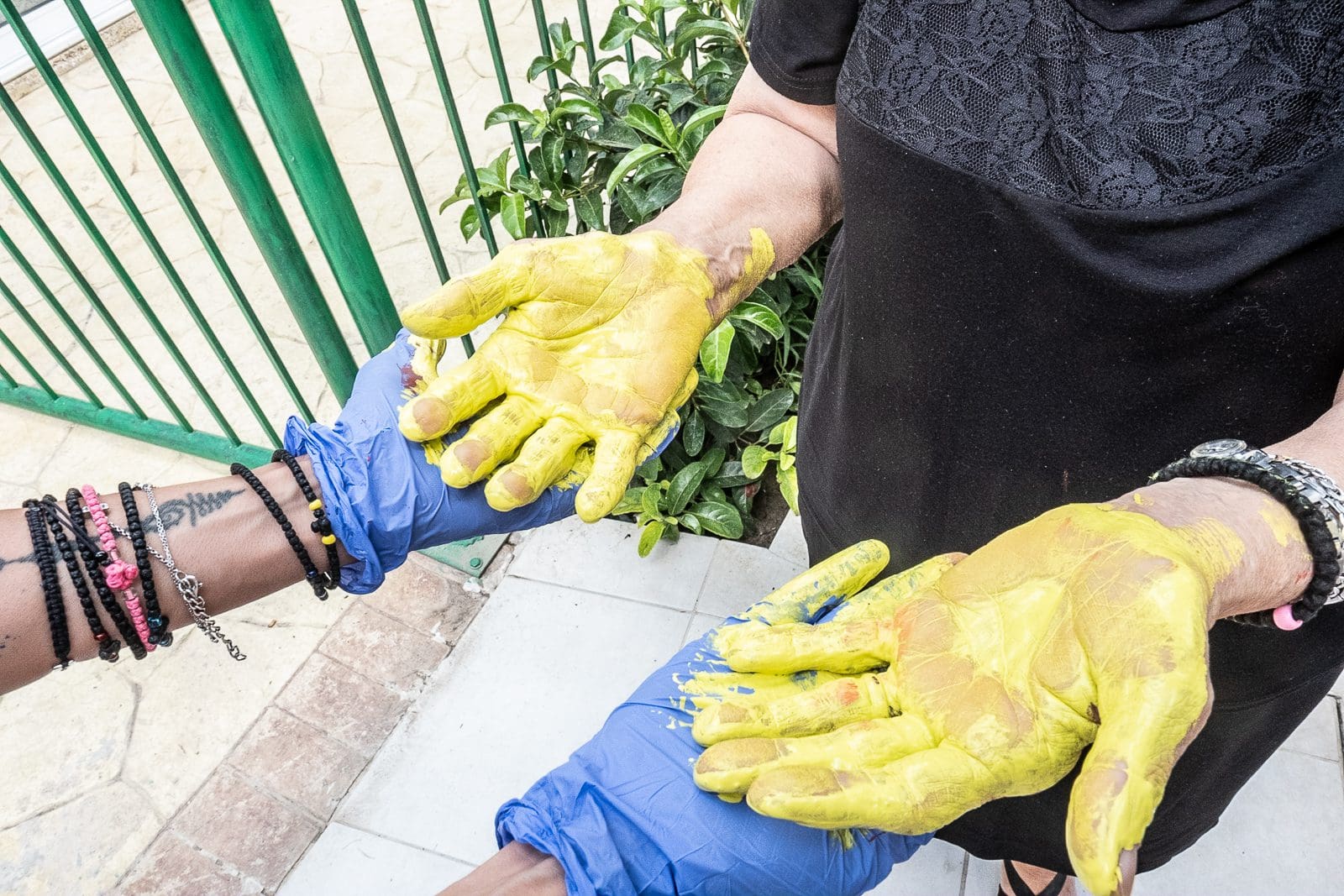
Colours and gestures to bring a smile
What is the role of colour in this artistic experience? Liana answers me: ” The colours are important and must be suitable for that structure, so we do a whole work of organization and choice together as a group. But it’s not only the critical colour but also the gesture; we want to involve people through the artistic gesture of creation. The ultimate goal is to give moments of well-being in contexts that are unfortunately far from well-being because they are complex, sad, and almost painful. The gesture remains in their memory,” Liana continues, “and so does the emotion that comes with it. I would not call it therapy, but rather a heart joining with another soul to excite and be happy, even for brief moments ”.
“The Department of Human Rights and the Red Cross played a key role in carrying out this mural work, which went far beyond our expectations,” Elena interjects again about the PEL project. “So many people participated, despite the initial mistrust of the detainees, which we expected. Seeing these people, the inmates and the guests of the retirement home in Agios Antonios, where we made a beautiful mural in the facility’s garden, smiling and sharing that moment of joy, was our most excellent satisfaction as artists and as people. Maybe some, referring to the nursing home, understood more than others what we were doing, but it didn’t matter because they enjoyed it, thanked us, and hugged us. It was much stronger than I expected ”.
I ask Elena again if she has a particular memory of these days. She smiles at me: “ I have many. I am referring to the boys from the Detention Center, some of them were very good; they seemed very familiar with paintbrushes. In addition, our drawing had many areas of colour, and they would move to work on the whole wall; in short, they collaborated, and already this image for us was very strong. I remember one Egyptian boy who was very young and shy in approaching; the first day, he did not come, but the second day he started to approach us, then he took the brush in his hand, he was laying it on the wall turning it randomly, he did not know how to do it. On the third day, he started drawing lines, he was also happy, so much so that he checked if the colours were right, and at one point, he even started directing the others. His name was Mustafa, and he had just arrived at the centre; at first, he couldn’t get close to us women, and then instead, he began to become more familiar. It was very nice to witness this transformation ”.
Elena then recalls the guests at the Agios Antonios center, a nursing home where people with intellectual disabilities also live: “At one point, I turned around and saw a lady dipping her hands in colour. Her face was serene as if she was playing; she wanted to paint with her hands on the wall. An image that stayed in my heart ”.
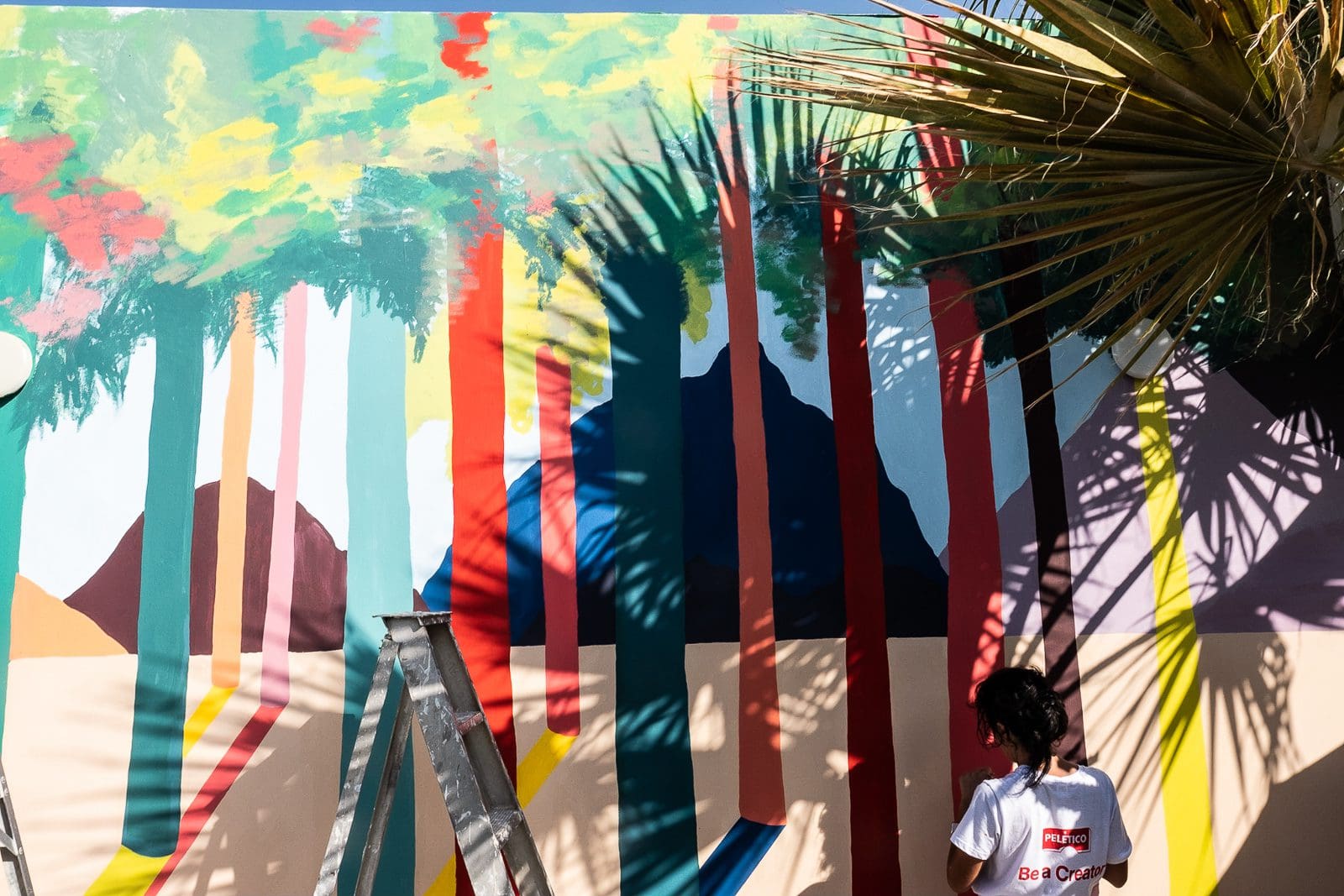
Walking around the northern part of Nicosia, one sees barbed wires and fences everywhere. With my Italian passport, I had no difficulty crossing the double checkpoint, Greek and Turkish, that bisects the capital. However, Liana, as I wrote, cannot cross that border with her Armerno passport. And she is not the only one. She, and the migrants passing through Menoyia, share a barbed wire. Wedged into the buffer zone is the Church of the Holy Cross. On the wall adjacent to the church stretches barbed wire and underneath an image of Pope Francis, who, on a visit to the island in December 2021, addressing the Catholic community said: ” You are immersed in the Mediterranean: a sea of diverse histories, a sea that has cradled so many civilizations, a sea from which people, peoples, and cultures from all parts of the world still disembark. They come to ask for freedom, bread, help, brotherhood, and joy, but they find in front of them a hatred called barbed wire ”.
…everything started to flow when they saw the colours, paint brushes and our three smiles. And the mural, which we prepared inside the canteen, gradually took shape and colour with the help of everyone
– Pantelis

